Innovative Sealing Solutions For Medical
Diaphragm Seals
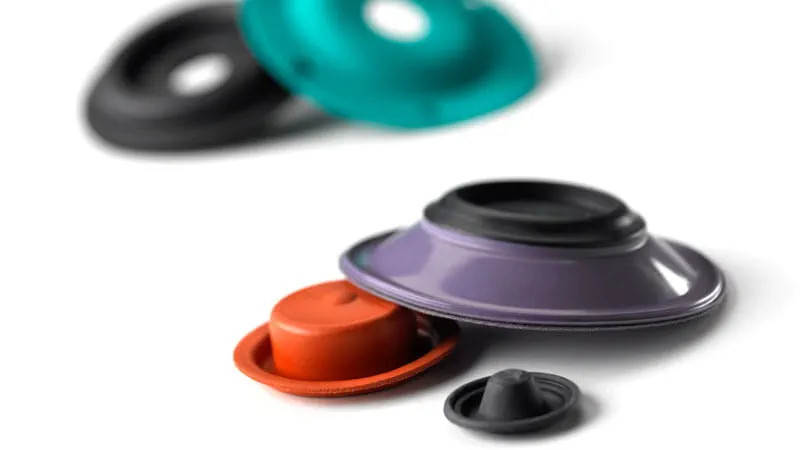
Key Benefits:
- Manufactured in a variety of elastomers or PTFE based materials
- Available in homogenous or fabric-reinforced materials for higher pressures
- Barrier materials such as PTFE can be applied for chemically aggressive environments
- Plastic or metal-to-rubber bonding to inserts simplifies assemblies
- Materials compliant with relevant life sciences approvals and standards
Typical Medical Applications: Respiratory devices such as spirometers, ventilators, air blenders, anesthesia equipment, hematology analyzers and sanitary pharmaceutical applications.
Materials Specific to Medical
We offer a range of elastomeric materials specifically for life sciences applications which allow the diaphragm to be used in practically all liquid and gaseous media, while standing up to even the most rigorous sterilization processes.
Use of Diaphragms
Diaphragms are used in a variety of medical, pharmaceutical and biotechnology applications, particularly in low pressure valves. In a typical valve application, the diaphragm’s sealing bead seals the valve when it is in its ‘at rest’ position, similar to a static gasket or O-Ring. An actuator lifts the diaphragm, opening the valve to allow fluid flow. When the actuator is de-energized, a spring is typically used to return the diaphragm to its static position.
Sanitary Gaskets

Key Benefits:
- Generally used in static applications
- Can be over-molded to plastics and metals
- Cost-effective solution
- Available in materials specifically developed for life sciences applications
- Compliant with approvals and standards
Typical Medical Applications: Anesthesia equipment, surgical drills, biotech processing equipment, door seals
Materials Specific to Medical
Our gaskets can be made from various rubber elastomers such as VMQ, EPDM, FKM, NBR, HNBR, as well as our proprietary FFKM, Isolast. They can also be made of our proprietary Turcon® PTFE based and Zurcon® UHMWPE materials.
Gasket Materials
Gaskets are used in a variety of medical, pharmaceutical and biotechnology applications, generally as a static seal where an O-Ring does not provide an adequate seal. In these cases, improved performance can be achieved by molding a custom-shaped gasket that more precisely fits into the mating groove. The cross section of the gasket can also be customized to optimize seal performance. These seals are used on a variety of equipment, often used to protect the equipment from the environment.
Glyd Ring®

Key Benefits:
- Used as a rod and piston seal in reciprocating and rotary applications
- Easy to install
- Simple groove design
- One piece construction possible
- Resistant against shock loads
- Wear resistant materials ensure long service life
Typical Medical Applications: Glyd Ring® seals are generally used in reciprocating cylinder applications due to their high side load and shock resistant capabilities. Typical applications are hospital beds and patient lifts.
Materials Specific to Medical
Our Turcon® PTFE based compounds are typically used as the jacket material for most applications. High modulus Zurcon® materials such as UHMWPE or polyester can be used if a more extrusion resistant compound is needed. Many of these compounds are compliant with FDA CFR177.2600, 3-A, USP Class VI, Cytotoxicity (USP 87), NSF, KTW, WRAS etc. NBR, FKM and EPDM are typically used for the O-Ring energizer.
About Glyd Ring®
Glyd Ring® are recommended for applications requiring long service life where the part is exposed to high pressures and side loads. The seals are comprised of two components: a plastic sealing element and an elastomer energizer. Radial notches are machined into the seal jacket to allow the media to quickly fill the groove, loading the elastomer energizer. The design allows the seal to react quickly to sudden changes in pressure or direction, allowing the seal to provide low friction operation with no stick-slip.
Slydring®
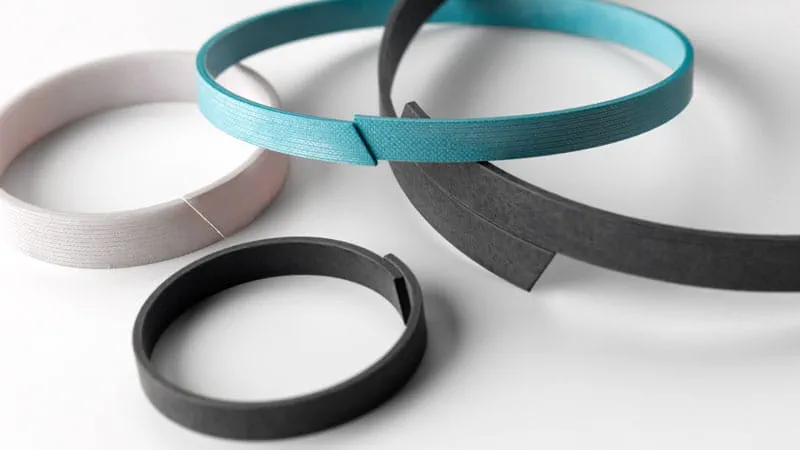
Key Benefits:
- Used as a rod or a piston guide in reciprocating applications
- Easy to install
- Prevents metal-to-metal contact
- Low friction
- No stick-slip
Typical Medical Applications: Slydring® are generally used in cylinder applications due to their high side load and shock resistant capabilities. Typical applications are hospital beds, patient lifts, and prosthetic knees and ankles.
Materials Specific to Medical
Slydring® can be made from our Turcite (PTFE), Zurcon® (UHMWPE), Orkot® (Composites) or HiMod® (High modulus plastics such as PEEK) materials. Many of these compounds are compliant with FDA CFR177.2600, 3-A, USP Class VI, Cytotoxicity (USP 87), NSF, KTW, WRAS etc.
About Slydring®
Slydring® wear rings are generally used in reciprocating cylinder applications for a variety of medical applications. The function of Slydring® is to absorb side load forces in the rod or piston areas. They also help guide the rod or piston and prevent metal-to-metal contact.
Rectangular in cross-section with either rounded or chamfered ends, Slydring® can be made completely solid to minimize fluid blow-by. In applications were leakage is less critical, Slydring® are slit, making installation much easier. Three slit designs are available: Straight, Angle Cut and Custom.
Turcon® Varilip® PDR
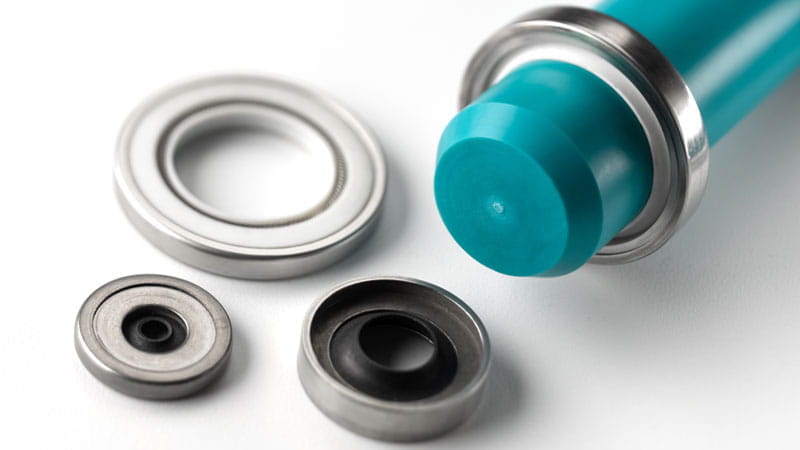
Key Benefits:
- Wide operating temperature range from -100 °C to +260 °C / -148 °F to +500 °F
- PTFE materials provide the lowest coefficient-of-friction available, between (.04 to .08)
- Chemically inert and self-lubricating to minimize contamination
- High rotational speed capability
Typical Medical Applications: Diagnostic and laboratory equipment, such as centrifuges, actuators, motors, gear boxes and vacuum pumps.
Materials Specific to Medical
Our Turcon® Varilip® PDR seals are made using our high performance, proprietary Turcon® PTFE compounds, many of which are compliant with FDA CFR177.2600, 3-A, USP Class VI, Cytotoxicity (USP 87), NSF, KTW, WRAS etc.
About Turcon® Varilip® PDR Seals
Turcon® Varilip® PDR seals are used in a variety of life sciences equipment, generally in rotational applications. The seals are comprised of two components - a precision machined metal body and a formed or bent PTFE element which is mechanically retained in the metal body. They are suitable for high speed, low pressure applications. Turcon® Varilip® PDR seals can be machined with a groove that automatically back pumps fluid, preventing fluid from going past the seal and into the environment.
Turcon® Variseal®
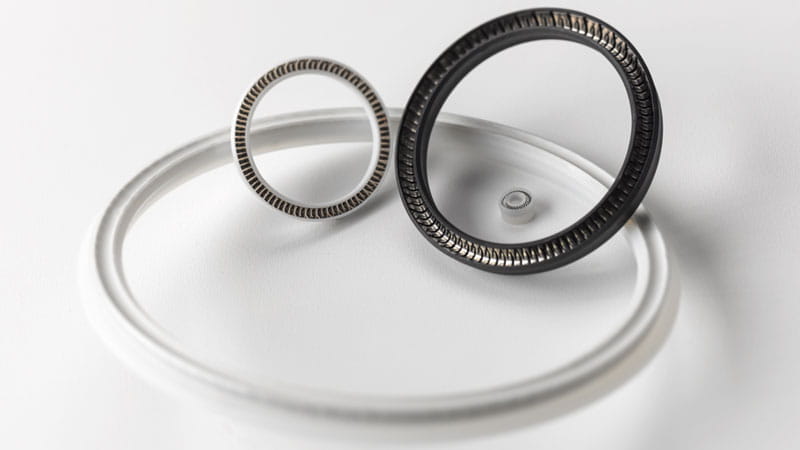
Key Benefits:
- For static, dynamic and rotary applications
- Used as a rod or piston seal or wiper to minimize contamination
- Turcon® PTFE based materials provide the lowest coefficient-of-friction available (.04 to .08)
- Operating temperatures range from -253 °C to +300 °C/ -423 °F to +572 °F
- Chemically inert and self lubricating for cleaner operation
- Three spring designs to customize load deflection characteristics
Typical Medical Applications: Diagnostic & lab equipment such as syringe pumps, HPLC, immunoassay and chemistry analyzers. Powered surgical hand pieces such as bone drills, and oscillatory saws in cranial, ENT and large bone orthopedic applications. Pharmaceutical and biotech filling equipment as well as cryogenic and oxygen applications.
Materials Specific to Medical
PTFE, UHMWPE and Polyesters are typically used as the seal jacket material for most life sciences applications. Spring energizers are available in three materials: stainless steel, Hastelloy and Elgiloy. The seals can be made using materials compliant with FDA CFR177.2600, 3-A, USP Class VI, Cytotoxicity (USP 87), NSF, KTW, WRAS etc.
About Turcon® Variseal®
Turcon® Variseal® are used in a variety of medical, pharmaceutical and biotechnology applications, generally in reciprocating pump, cylinder or valve applications. They can also be used in rotary applications such as bone drills, swivels and valves or in static applications such as connectors or cryogenics.
The seals are comprised of two components: a jacket and energizer. The jacket seals against the mating surface and is generally made of a plastic and is usually energized by a metallic spring.
In low pressure applications, the energizer maintains seal load against the mating surface. For higher pressures, the media pressure itself can be used to maintain seal load allowing the seal to function at extremely high pressures.
We offer three types of metal spring energizer designs: slant coil, cantilever and helical. Each spring type has a different load deflection curve allowing our engineers to optimize the seal design based on the application requirements.
Wipers and Scrapers
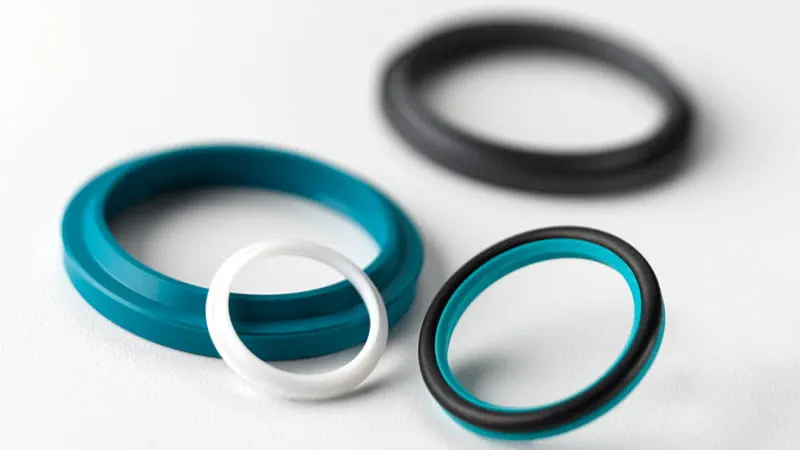
Key Benefits:
- Used in reciprocating and rotary applications
- Prevent contamination and premature system failure
- Protect rod seals from environmental contamination
- High wear resistance materials ensure long service life
Typical Medical Applications: Wipers and scrapers are most commonly found in cylinder or rotary applications. When used in conjunction with a rod seal they can extend the service life of your life sciences equipment. Typical applications are prosthetic knees, patient lifts, hospital beds, surgical drills and other powered hand tools.
Materials Specific to Medical
Our Medical wipers and scrapers come in a wide variety of materials including metals, elastomers, Turcon® and Zurcon®. Many of these compounds are compliant with FDA CFR177.2600, 3-A, USP Class VI, Cytotoxicity (USP 87), NSF, KTW, WRAS etc.
About Wipers and Scrapers
Wipers and scrapers are used in a variety of medical, pharmaceutical and biotechnology applications, generally in reciprocating cylinder or rotary applications. Their seal lips are designed to scrape foreign particles or moisture from the piston rod, thus preventing contamination of the media being sealed. In doing so, the wipers or scrapers extend the service life of the other sealing and bearing components in the device.
Both single- and double-acting designs of wipers and scraper are available. Not intended to seal pressure on their own, they work in conjunction with a rod seal to achieve the optimum sealing configuration for an application.
Application Examples
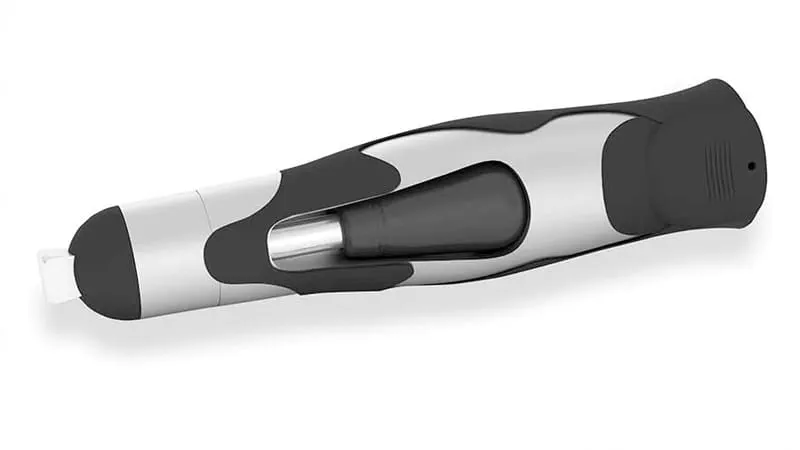
Customer: Prosthetics manufacturer
Application: Computer controlled damper for prosthetic knee
Issues:
- Rod hitting the sides of the damper
- Oil and air barrier leakage
Solution:
- Custom FKM bladder with bushing, Zurcon® AS Wiper, Zurcon® L-Cup, Turcon® Slydring®
Trelleborg Medical Solutions engineered the solution to protect the computer-controlled damper within the prosthetic knee, preventing friction, stick-slip and leakage through years of service. The knee helps patients to have a more natural gait and become more active.
